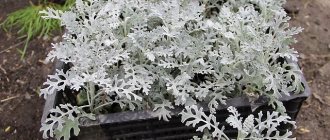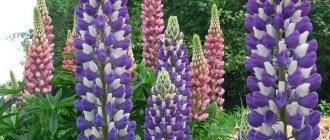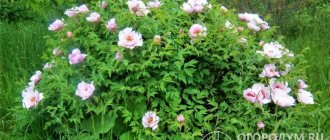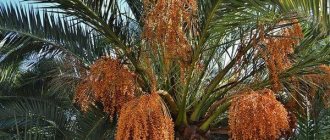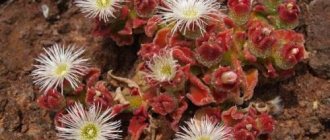Eccremocarpus or Eccremocarpus is a perennial, fast-growing vine. In a short time it can grow up to 5 m in length. It comes from Chile.
Among other vines for the garden, the lilac has been awarded the rank of a universal, tireless, profusely and brightly flowering exotic. He has become a real star in pole growing.
This graceful steeplejack has lacy leaves. The combination with fiery red flowers looks exotic and elegant at the same time. Eccremocarpus has no competitors in grace and elegance.
With its original appearance, the lichen is unpretentious in care. The only drawback is low frost resistance. As a perennial crop, it is grown by digging it up for the winter; it is more practical to grow it in a container.
Methods for growing lichen carp in open ground
In its natural habitat, the liana grows successfully for many years. But the tuberous rhizome is sensitive to frost. The liana can overwinter in open ground only in regions with a very mild climate. In middle zone conditions, it is necessary to transfer the plant to a frost-free room. It is most convenient to grow the plant in a container and move it indoors for the winter.
There are 3 ways to grow lichen carp.
- As an annual plant: sowing seeds for seedlings and transplanting young vines into open ground.
- As a biennial crop: the seeds are sown before winter in a heated greenhouse or on a windowsill, and transferred to open ground in the spring.
- As a perennial: each time the vine is moved indoors for wintering.
Transplantation to a permanent place
Visloporpnik , which will grow indoors, is planted in pots of the required size in mid-April. Before planting or taking vines outside, they need to be hardened off for some time.
To do this, the plants are taken out during the day and returned indoors in the evening. The vine is planted in the garden at the end of May, when there is no longer any danger of return frosts.
The ridge is prepared in advance; it is better to add organic fertilizers in the fall, and in the spring, humus is carefully dug up and loosened.
The optimal distance between plants is 30 cm. It is better to choose a sunny place, protected from the wind.
In places where there is little sun and light , the vine will grow slowly, will not be lush and will bloom much later.
Growing beetroot from seeds at home
Eccremocarpus seeds photo
Is it necessary to soak the seeds of the plant? There is no need for this: the seeds will have enough moisture obtained from the soil during sowing.
- Start sowing the seeds of the lichen in February-March.
- To grow seedlings you will need loose, nutritious soil; you can use universal soil.
- Sow in common containers at a distance of 3-5 cm or in separate cassettes, one seed at a time.
- Moisten the soil before sowing. Spread the seeds over the surface, cover with a thin layer of soil mixture.
- To create a greenhouse effect, cover the top of the seedling box or cassette with glass or cling film. Ventilate the greenhouse daily.
- Shoots will appear in about 14 days.
- At the stage of appearance of 3 true leaves, plant them in separate containers (it is best to use peat pots).
- Place a support when the vines begin to grow.
- Seedlings must be gradually accustomed to outdoor conditions two weeks before planting in the ground.
When the threat of return frosts has passed, Eccremocarpus seedlings can be planted in garden containers or in open ground.
Maurandia Barclay
10 best online stores for seeds and seedlings
If you provide Maurandia with support, the pedicels and leaf petioles will spin wildly around it, forming a flowering column. This plant was also brought from Latin America. Its distinctive feature is its unusual triangular-shaped leaves. The vine grows from two to five meters high. The flowers, colored purple and with a yellowish throat, begin to bloom in mid-summer and delight with their appearance right up to the middle of the autumn season.
Secrets of growing Barclay's Maurandia
Barclay's Maurandia is propagated by growing seedlings. The process is exactly the same as in the case of the quill carp:
- seeds are sown in peat pots;
- in May, the seedlings are handled as carefully as possible so as not to injure the young plant.
Maurandia needs to be weeded, especially at first. Otherwise, the weed will not allow it to grow. The plant must be fed every seven days. For this purpose, use ready-made mineral fertilizer, as well as low-concentration chicken manure diluted with water, alternating one fertilizer with another.
Features of accommodation
In addition to the fact that the vine needs a southern location, it also does not tolerate rough supports. The flower itself is very delicate and thin, so it needs appropriate supports: stretched thin wire, fishing line or thin ropes tending upward. Maurandia Barclay looks perfect at the entrance to the house if the entrance is in the form of an arch.
How to plant lichen seedlings in open ground
How to plant ecremocarpus in the ground photo
- The rhizome of the vine is compact and does not take up much space - place the seedlings at a distance of about 30 cm from each other.
- Handle the plants along with the earthen ball.
- Be sure to lay a thick drainage layer at the bottom of the flowerpot. Add a handful of humus to the planting hole.
- After planting, water thoroughly and mulch the soil.
Conditions for growing ecremocarpus
Selecting a location
The rhizome of the plant is sensitive to excess moisture, especially during the flowering period - choose a place protected from flooding by precipitation. When grown in a container, it can be installed in both shady and sunny areas.
Lighting
The lighting needs to be bright, direct sunlight is favorable. Place the ecremocarpus preferably on the south side.
Priming
The soil should be nutritious, loose, and moisture-absorbing. Sandy loam and loam soils are well suited, ideally a sand-clay mixture. Containers can be filled with universal substrate.
How to care for lichen carp
Vislopordnik rough vines photo
Watering
Both when growing in a container and in open ground, regular soil moisture will be required. Do not allow the earthen clod to dry out; stagnation of moisture is also harmful. The plant growing in a container is watered almost daily.
Liana loves a stable level of humidity. To do this, mulch the soil surface. Organic materials and decorative stones can be used as mulch. For this vine in any form of cultivation, mown grass, fine humus, pine needles, straw and decorative mulch are suitable.
Top dressing
Eccremocarpus needs feeding. When growing in containers, apply complex mineral fertilizers weekly for flowering plants. The procedure begins from the moment of transplantation into the container and ends in August. Eccremocarpus growing in open ground requires 2-3 feedings per season. Apply the first one a month after transplantation into open ground, the second one during the budding period, and the third one at the beginning of flowering. You can use another method: fertilize every 2 months.
Bush formation and pruning
Support for elliptical plant photo
The liana has a huge number of tendrils that help it climb onto supports. It is better to guide the shoots themselves along the support as they grow to promote spread in the direction you want. It is not recommended to trim shoots during the warm season; the vine is pruned only for the convenience of wintering indoors.
In order for flowering to be lush and continuous, it is necessary to regularly remove wilted inflorescences. Too long shoots can be shortened if desired.
Description
Eccremocarpus, or ecremocarpus, is a fast-growing climbing or clinging shrub of the Bignoniaceae family. The plant's homeland is Chile, where it is found as a perennial and actively grows in a limited area.
As an ornamental crop, lichen is grown only as an annual. But even in one year, ecremocarpus can grow to a height of more than 3 m. Botanical characteristics:
- forms a typical fibrous root system; in the wild growing environment there is also a tuber;
- the herbaceous stem grows from 1 to 7 m, a large number of shoots with tendrils are formed on it for adhesion to the support;
- petiolate leaves have a complex pinnate shape and are painted bright green;
- flowers are tubular-type, collected in racemose inflorescences up to 15 cm long;
- the buds are painted in bright shades, varieties with orange, red and golden colors are popular;
- The fruit is a brown-green pod containing inedible seeds.
With high-quality care, the plant can bloom from June until the beginning of the return of autumn frosts. The plant is often used for landscaping; the shrub has gained great popularity due to its abundant flowering and ease of care.
Eccremocarpus in landscape design
Vislopordnik in garden design
Visloporpnik grows very quickly. It will perfectly decorate an unsightly barn wall or wooden fence. Plant it to create a colorful screen on arches, canopies, walls of gazebos, houses, terraces. The liana can reach the height of the second floor of a building.
Can be used for zoning space: pull the mesh in the place you need.
An openwork vine will become a spectacular background in the background.
Application of vines
The plant grows very quickly. Over the course of a season, one bush can entwine an entire house or building. Therefore, the use of vines is understandable: cover all old buildings on the site, decorate the terrace, make a living fence. Using trellises, you can divide it into zones anywhere in the garden.
Beautiful plantings of viper carp on balconies. In a short time it will entwine the entire balcony, making it very impressive. If the balcony is insulated and the temperature in it does not drop below +4 degrees, then the vine can live up to five years. All you have to do is trim it in time.
This is such an unpretentious liana. But you can decorate your garden plot or room with fiery, beautiful flowers in a very short time.
Types and varieties of Eccremocarpus
The genus includes 4 species, 1 is cultivated with several varieties.
Eccremocarpus scaber
Eccremocarpus scaber photo
It has thin, almost straight lashes and is attached to supports using antennae. Thanks to this, the vine looks airy and weightless. In combination with complex pinnate leaf plates, it creates a continuous coating. The leaves are arranged oppositely, divided into 3-7 small lobes. Branched antennae emerge from the central veins. The color of the leaf mass is rich, dark green. With a fragile and delicate appearance, the vine will perfectly protect from the wind.
During the flowering period, the openwork background is covered with a bright scattering of flowers. Loose racemose inflorescences are attached to the ends of the shoots. The flowers have the following shape: a narrow tube with an almost closed throat. The color scheme consists of fiery shades - a combination of red and orange. Flowering begins in July and only subsides with cold weather. Moreover, it is the leaves that are afraid of frost, not the flowers. Fruits in the form of mini peppers begin to ripen in August.
Varieties
The most commonly grown plant in our country is the rough plant . It is characterized by rapid growth and, under favorable conditions, reaches a length of 3-5 m per year. Inflorescences of yellow, orange and red tubes densely cover the vine. The size of the brushes is about 15 cm. Flowering occurs from early July to mid-October. The leaves are petiolate, unpaired, collected in 5-7 pieces. Spiral-shaped antennae extend from the base of the petiole. Fruits similar to hot peppers begin to form from the end of August. Depending on the color of the flowers, the following varieties of beetroot are distinguished:
- TrescoGold – golden and yellow tubes are collected in an inflorescence;
- TrescoRose – flowers of rich cherry pink color with a golden hue at the throat;
- TrescoScarlet - scarlet and orange flowers with shades of ocher in the throat.
Rough horned carp.
Among the latest achievements of breeders, one can highlight the Sashiko horned carp . It is distinguished by dark green carved foliage and bright small flowers. Glossy tubes of orange and red colors reach 15-20 mm in length.
Orchard sashiko


